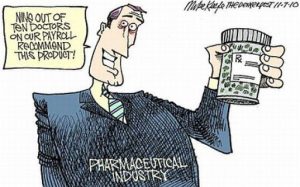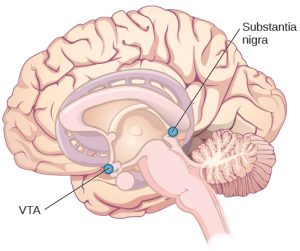For as long as I can remember, one of my family members (we’ll call him A) has always been the kind of person who would forget to lock the front door behind him and would frequently misplace his belongings. As a result, my mother and I spent many years anxiously tearing out our hair on the sidelines, while A seemingly drifted through each day with apathetic ease. Eventually we began to excuse his behavior with a defeated sigh, a roll of our eyes, and a simple “You know A.” Then, when he turned the transitional corner of entering high school and somehow lost his house key in the ocean, I accepted the foreseeable likelihood that he could, and probably would, be this way forever. So when my mother called to tell me that A had been diagnosed with attention-deficit/hyperactivity disorder (ADHD), it didn’t surprise me as much as it did confirm a long, sneaking suspicion.
Now I’m no stranger to the controversy surrounding the legitimacy of ADHD, and still, I tend to side with the skeptics on this one. As of 2011, it was reported by the Center for Disease Control and Prevention (CDC) that approximately 11% of American children between the ages of 4 and 17 were diagnosed with ADHD. However, the American Psychiatric Association maintains that only 5% of children actually have the attentional disorder. So why is there a 6% discrepancy?
Take a deep breath and prepare yourself. The answer may take time to process.
Big Pharma and Bad Doctors

The term “Big Pharma” gets thrown around every now and then–most often in those 60 minute televised news specials–but the problem it describes is not to be taken lightly. In an effort to buy out the medical industry, pharmaceutical companies pay doctors and researchers to overstate the negative effects of ADHD and to highlight the benefits of a certain drug, promoting its prescription and use. Schwarz and Poh Si Teng of The New York Times reported on this issue in the 2013 piece Selling ADHD: How Pharmaceuticals Played on Fears. Yes my friends, it’s messed up. As rapper Notorious B.I.G. puts it: “Mo’ Money Mo’ Problems.”
What’s worse is when doctors are quick to ascribe observed “symptoms” such as disruptiveness or inattention to be the result of ADHD. Sometimes, what is diagnosed as the signs of an attentional disorder is actually the result of another, unrelated cause–family problems, lack of sleep, anxiety, bullying, and the list goes on. Sadly, it’s quicker and easier to fit a patient’s symptoms under the wide umbrella of ADHD than it is to take the time and effort to provide personalized treatment.
Another controversial issue surrounding ADHD is how it is classified in different countries. A couple years ago, there was a misconception that the attentional disorder was less prevalent in France due to a report from the CDC that less than 0.5% of French children were diagnosed and given medication for ADHD. However the truth is not so much in the numbers as it is in the diagnosis. In France, ADHD is not seen as a neurological disorder like it is in the U.S., but, rather, as a sociological disorder that results from a set of social situations. Rather than prescribing medication as the first line of treatment, psychotherapy and family counseling come first, making the CDC’s reported percentage of children with ADHD appear so low.
This is Your Brain on ADHD Meds
As a Neuroscience major, I have the benefit of taking a wide range of courses that span a multitude of specialized disciplines. One course in particular, PSYC 179: Drugs, Addiction, and Mental Disorders, prompted me to write about this topic. While dense with information, the class is quite useful in revealing the physiological effects of taking certain drugs.
Sometimes, the effects of a drug sound worse than the illness itself, which got me thinking. What about people who are misdiagnosed with ADHD? How could they be affected by taking medication that they do not need?
In most cases, stimulants such as Adderall and Ritalin are used to treat those diagnosed with ADHD. At first it appears counterintuitive. A stimulant? To help someone with hyperactivity? At prescribed doses these medications work similarly to coffee by increasing the dopamine (DA) levels in the brain so that normative production is achieved.

DA is a neurotransmitter that is most popularly known for its role in addiction and reward; however, DA is also involved in our movements, memory, behavior, cognition, attention, sleep, mood, and learning. This important chemical is produced in neurons located throughout the brain, such as in the ventral tegmental area and in the substantia nigra.
While those with ADHD exhibit decreased production of DA, stimulants help to rehabilitate its levels to the norm. Side effects, though, include a loss in appetite, sleep problems, and even heart and psychiatric problems. The medication, like any drug, can be abused if DA levels are increased to a point of generating addiction. That’s why it is important to prescribe the correct dosage and, more importantly, why we should err on the side of caution when it comes to the diagnosis.
Keep Calm and Research On
I agree that ADHD is a very real disorder and should be treated as such, but I believe that it is equally important to understand the whole picture before taking action. Yes, this will take time and energy and a whole lot of patience, but for millions of people, this is what determines whether or not they take part in a lifetime of treatment.
Recently, similar thoughts have arisen from organizations like The American Academy of Pediatrics, which advocates for behavior therapy before medication to treat those diagnosed with ADHD. This, in addition to the 2011 initiation for a more standardized approach in the determination of the attentional disorder, has led to a “leveling off” of ADHD rates. Of course, controversy still remains. Some who would benefit from first taking medication must go through a waiting game before receiving effective treatment.
There is no doubt that perspectives on ADHD is in flux, and until a cure for the disorder is found, this will likely continue. For instance, here is a visual timeline of the changing ADHD diagnostic criteria, prevalence, and treatment from the 1900s to now, according to the CDC.
When it comes down to it, deciding on the best form of treatment is a tough call with no real winners in the end. I still don’t think we have come to a point where we can diagnose ADHD with 100% certainty. One thing I am sure of, though, is that lots and lots of research still needs to be done–that is, research on the attentional networks in the brain, research on finding more specific treatments, and research on the long term effects of these treatments.
In the meantime, those with ADHD–my family member included–must rely on the knowledge and judgment of the today’s doctors and, for better or worse, trust them.
[hr gap=””]
References
- http://www.collective-evolution.com/2016/10/25/a-d-h-d-nation-how-big-pharma-created-the-a-d-h-d-epidemic/
- http://www.nytimes.com/2013/12/15/health/the-selling-of-attention-deficit-disorder.html?pagewanted=all
- http://www.collective-evolution.com/2016/10/28/almost-no-children-in-france-are-medicated-for-adhd-heres-how-they-define-treat-it/
- http://www.webmd.com/add-adhd/guide/adhd-medication-chart#1
- http://www.news-medical.net/health/Dopamine-Functions.aspx
- http://www.mankatofreepress.com/news/local_news/study-adhd-rates-level-off-after-guidelines/article_9cbf85c8-b030-11e6-874b-ebecbbeacd06.html

